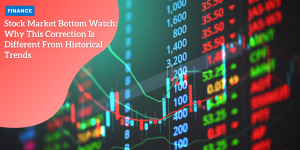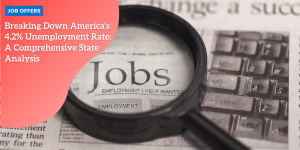Michigan Consumer Index Falls Below Expectations: Complete April Analysis

Sharp Decline in Consumer Confidence
April brought a sharp decline in consumer confidence in the United States, as reflected by the University of Michigan’s Consumer Sentiment Index.
Anúncios
The index plummeted from 57 in March to 50.8 in April, a drop that significantly exceeded analysts’ expectations of 54.0.
This decline isn’t just a statistical anomaly; it speaks volumes about growing consumer pessimism regarding the US economy’s future.
Exceeding Analysts’ Expectations
When analysts at FactSet projected a decrease to 54.0, they were hopeful that consumer confidence would dip moderately.
Anúncios
However, the actual drop to 50.8 indicates a deeper issue at hand.
It suggests that consumers are far more worried about the economic outlook than experts had predicted.
This level of pessimism can have wide-reaching consequences, affecting everything from spending habits to job market behavior.
Anúncios
Growing Pessimism in the Economy
The significant drop in the index reflects several underlying concerns.
For one, rising costs and inflation pressures are making daily life more challenging for many Americans.
This is evident from other data points such as 12-month and five-year inflation expectations, which are both on the rise.
Coupled with concerns over job stability, it is no wonder that consumer confidence has taken such a noticeable hit.

Economic and Social Implications
Low consumer confidence can trigger a domino effect across the economy.
When consumers are pessimistic, they are less likely to spend money, which in turn affects business revenues and potentially leads to lower economic growth.
This could also influence Federal Reserve decisions regarding interest rates and other monetary policies aimed at stabilizing the economy.
The downward trend in consumer sentiment cannot be overlooked.
It’s crucial for policymakers, businesses, and the public to understand these metrics, as they are indicative of broader, more systemic economic issues.
Rising Inflation Expectations
Consumers are bracing for higher costs across the board as the latest data reveals a concerning jump in inflation expectations.
According to the University of Michigan’s recent survey, 12-month inflation expectations have soared from 5% in March to 6.7% in April.
This represents the highest inflation expectation reading since 1981, underscoring the growing anxiety among consumers about rising prices.
Unprecedented Surge
This spike marks the fourth consecutive monthly increase in inflation expectations, signaling that consumers are increasingly concerned about the persistent rise in the cost of living.
The April reading far exceeds previous levels seen in recent years, reflecting a broad-based apprehension about the economic trajectory.
Analysts predict that such expectations could have a self-fulfilling effect, where consumers prepare for higher inflation by demanding higher wages and adjusting their spending, which may further fuel inflation.
This behavioral response can create a vicious cycle, exacerbating the very issue consumers aim to protect themselves against.
Historical Context
To put this into historical perspective, the last time inflation expectations reached such heights was in the early 1980s, a period remembered for its economic turbulence and high inflation rates.
The current rise in expectations serves as a stark reminder of the economic challenges faced during that era and raises questions about the possibility of history repeating itself.
Consistent Upward Trend
This continuous uptrend in inflation expectations is not an isolated anomaly but part of a longer-term pattern.
Consistent increases over recent months indicate that consumers are not seeing any immediate relief from inflation pressures.
This ongoing concern is compounded by mixed signals from various economic indicators, leading to a cautious consumer outlook.
Implications for Policy and Market
The implications of rising inflation expectations are far-reaching.
For policymakers, particularly the Federal Reserve, this data could necessitate more aggressive actions to control inflation.
Interest rate hikes, tightened monetary policies, and other measures may be on the table as the Federal Reserve aims to rein in inflation without stifling economic growth.
For the market, high inflation expectations can influence investment decisions, savings behavior, and consumer confidence.
Businesses may also adjust their pricing strategies, wages, and operational costs to align with anticipated inflation trends.
Consumer Behavior
As consumers anticipate further price increases, their behavior in terms of spending, saving, and investing is likely to shift.
High inflation expectations can lead to changes in consumption patterns, with more people focusing on essential purchases and delaying discretionary spending.
This cautious approach may have wider repercussions on overall economic activity and growth.
The cascading effects of rising inflation expectations on various facets of the economy highlight the interconnectedness of consumer sentiment, market behavior, and policy actions.
As we delve deeper into other economic dimensions, the picture becomes clearer, revealing a complex and evolving economic landscape.
| 📌 Factor | Current Trend | Economic Impact |
|---|---|---|
| 📊 Inflation Expectations | Rising from 4.1% to 4.4% over five years | Signals long-term inflation concerns and lower confidence in price stability |
| 🛍 Consumer Behavior | Shift toward cautious spending and saving | Reduced discretionary spending impacts sectors like retail and housing |
| 🏢 Business Investment | Delayed or canceled projects due to cost uncertainty | Lower economic expansion and increased borrowing costs |
| 🏦 Monetary Policy | Pressure on the Fed to tighten policy | Potential rate hikes could slow growth further |
| 💡 Business Strategy | Seeking cost efficiency and productivity gains | Innovation and tech investment to counter inflation pressures |
Employment Concerns
The latest findings from the University of Michigan reveal a growing sense of unease among consumers regarding the job market.
An alarming trend has emerged, with consumer expectations for unemployment on the rise for the fifth consecutive month, reaching their highest level since 2009.
This steady increase is a clear indicator of the heightened anxiety about job market stability.
Alarming Rise in Unemployment Expectations
For the fifth month in a row, more and more consumers are expressing concerns about potential unemployment.
The data shows that the anticipation of rising unemployment has not been this pronounced since the aftermath of the 2008 financial crisis.
This persistent worry reflects a critical shift in consumer sentiment, which is now overshadowed by fears of job security.
Impact on Consumer Behavior and Spending
When consumers are worried about their employment prospects, it inevitably impacts their spending habits.
Typically, heightened job insecurity leads to a reduction in discretionary spending as households brace themselves for potential income loss.
This conservatism in spending can have a ripple effect on the broader economy.
Lower consumer spending can lead to decreased business revenues, potentially triggering a cycle of layoffs and further escalating unemployment fears.
Broader Economic Implications
The increased concern about unemployment, combined with rising inflation expectations, paints a troubling picture for the US economy.
When considering the broader implications, it’s clear that consumer behavior may continue to shift toward caution and conservatism, impacting overall economic growth.
This dampened economic activity could delay the recovery process and present additional challenges for policymakers aiming to stabilize the economy.
Monitoring the Job Market
Staying vigilant about job market trends and consumer sentiment is essential for both businesses and policymakers.
By closely monitoring these indicators, they can better anticipate the needs of the economy and implement measures to mitigate potential downturns.
Effective strategies might include targeted support for industries most at risk of layoffs or initiatives to boost consumer confidence through job creation programs.
As we delve deeper into the economic landscape, the need for a nuanced understanding of consumer behavior and market indicators becomes more evident.
Each of these factors plays a crucial role in shaping the future economic outlook and the measures required to ensure stability and growth.
Market Implications
Combined Effect of Declining Consumer Confidence and Rising Inflation Expectations
The largest implications stem from the confluence of declining consumer confidence and rising inflation expectations, which paint a worrying picture for the US economy.
In April, the University of Michigan’s Consumer Sentiment Index fell sharply from 57 in March to 50.8, far below the analysts’ forecast of 54.0.
This drop signifies increasing consumer pessimism regarding the economic outlook, causing a likely reduction in consumer spending and impacting overall economic activity.
Simultaneously, 12-month inflation expectations surged to 6.7%, up from 5% in March.
This increase marks the highest level since 1981 and speaks volumes about the inflationary pressures consumers are bracing for.
Higher inflation expectations can lead to a self-fulfilling cycle where businesses raise prices in anticipation of increased costs, driving further inflation.
Potential Impact on Federal Reserve’s Monetary Policy Decisions
These economic indicators will significantly influence the Federal Reserve’s monetary policy decisions.
The Federal Reserve closely monitors such sentiment indices and inflation expectations to gauge the health of the economy and make informed policy choices.
Continued rising inflation expectations and dwindling consumer confidence may pressure the Fed to adopt more aggressive interest rate hikes to combat inflation and stabilize the economy.
However, hiking interest rates comes with its own set of risks.
While it can help curb inflation, it also makes borrowing more expensive for both consumers and businesses, possibly stifling economic growth.
The Federal Reserve must balance these competing priorities to navigate the current economic turbulence.
Broader Implications for US Economic Recovery
The broader implications of these dynamics on the US economic recovery are profound.
Lower consumer confidence, coupled with rising inflation and increasing unemployment worries, is likely to reduce discretionary spending.
This reduction can negatively affect business revenues, leading to a potential slowdown in economic recovery.
As businesses grapple with decreased revenue, they might resort to cost-cutting measures, including layoffs, fueling further unemployment concerns.
Moreover, the persistent expectation of inflation will challenge both households and businesses, affecting consumption and investment patterns.
As the ongoing economic challenges unfold, strategic and timely interventions by policymakers, like targeted fiscal support and appropriate adjustments in monetary policy, will be crucial in mitigating adverse effects and navigating the path to recovery.
Understanding and addressing these interconnected factors is essential for fostering a stable economic environment.





